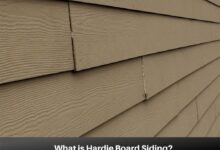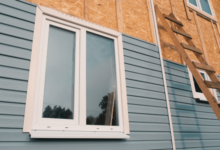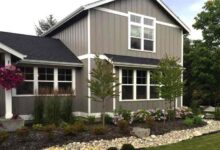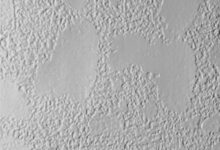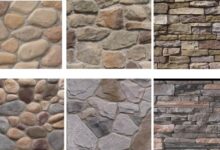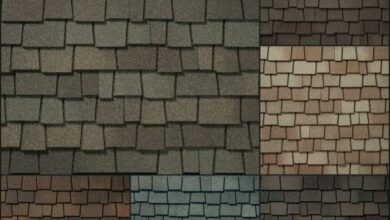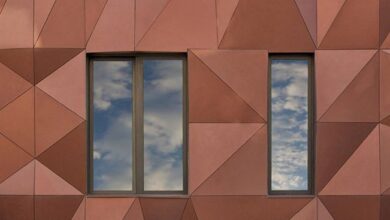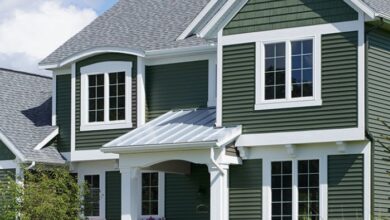Commercial Siding A Complete Guide
Commercial siding: the unsung hero of any successful business building. Choosing the right siding isn’t just about aesthetics; it’s a crucial decision impacting durability, maintenance, cost, and even your brand image. This comprehensive guide dives deep into the world of commercial siding, exploring various materials, installation processes, cost factors, building codes, and sustainability concerns. We’ll equip you with the knowledge to make informed decisions that maximize your return on investment and create a lasting impression.
From the initial design phase to long-term maintenance, we’ll cover everything you need to know to select and install the perfect commercial siding for your project. We’ll analyze different materials, weigh their pros and cons, and provide practical advice to help you navigate the complexities of this crucial aspect of commercial construction. Get ready to transform your building’s exterior from ordinary to extraordinary.
Types of Commercial Siding
Choosing the right commercial siding is a crucial decision impacting both aesthetics and longevity. The ideal material depends on factors like budget, building design, climate, and desired maintenance level. Let’s explore the key characteristics of several popular options.
Commercial Siding Material Comparison
The selection of commercial siding materials involves careful consideration of several key factors. Durability, maintenance needs, and cost-effectiveness all play a significant role in determining the best choice for a particular project. The following table provides a detailed comparison of common siding materials.
| Siding Type | Durability | Maintenance | Cost-Effectiveness |
|---|---|---|---|
| Vinyl | Moderate; susceptible to impact damage and fading. Expect a lifespan of 20-30 years. | Low; typically requires only occasional cleaning. | Generally affordable, making it a popular choice for budget-conscious projects. |
| Aluminum | High; resistant to rot, insects, and fire. Lifespan often exceeds 50 years. | Low; requires minimal maintenance, mainly occasional cleaning. | Moderate cost; more expensive than vinyl but less than fiber cement. |
| Fiber Cement | Very high; extremely durable, resistant to fire, rot, and insects. Lifespan can exceed 50 years. | Moderate; requires periodic painting to maintain appearance. | Higher initial cost than vinyl or aluminum, but the long lifespan and durability offset this over time. |
| Wood | Moderate to high, depending on the type of wood and treatment; susceptible to rot, insects, and weather damage if not properly maintained. Lifespan varies greatly. | High; requires regular painting, staining, and sealing to protect against the elements. | Cost varies significantly based on wood type and quality; can be expensive, especially for high-quality, durable woods. |
| Metal (Steel, Zinc, Copper) | High; extremely durable and resistant to fire, rot, and insects. Lifespan can exceed 50 years. | Low to moderate; may require occasional repainting or touch-ups depending on the metal type and finish. | Cost varies greatly depending on the metal type; steel is generally less expensive than copper or zinc. |
Aesthetic Considerations and Design Options
The visual appeal of commercial siding is a significant factor in the overall building design. Each material offers a unique aesthetic and range of design options.
Vinyl siding comes in a vast array of colors and styles, mimicking the look of wood or other materials. Aluminum siding is available in various colors and finishes, offering a clean, modern look. Fiber cement siding can be textured to resemble wood or stone, providing a versatile aesthetic. Wood siding offers a classic, natural look with variations in grain and color. Metal siding provides a contemporary, industrial feel, with options ranging from sleek, smooth surfaces to textured finishes. The choice depends entirely on the desired architectural style and overall branding.
Installation and Maintenance of Commercial Siding
Proper installation and diligent maintenance are crucial for maximizing the lifespan and aesthetic appeal of your commercial siding. Neglecting either can lead to costly repairs, premature deterioration, and diminished curb appeal. This section details best practices for both installation and upkeep, ensuring your investment remains protected and visually impressive for years to come.
Installation of Commercial Siding
The installation process varies depending on the siding material chosen. However, several common steps apply across most types. Careful adherence to these steps ensures a robust and long-lasting installation.
- Preparation: Begin by thoroughly cleaning the wall surface, removing any loose debris, old paint, or damaged sections of existing siding. This clean surface provides optimal adhesion for the new siding.
- Framing and Sheathing (if necessary): For new construction or significant repairs, ensure proper framing and sheathing are in place. This provides a stable and even base for the siding installation. This step is critical for preventing future issues like warping or sagging.
- Water-Resistive Barrier: Install a water-resistant barrier, such as housewrap, over the sheathing. This crucial step prevents moisture intrusion, protecting the underlying structure and extending the life of the siding.
- Flashing: Install flashing around windows, doors, and other penetrations in the wall. Flashing diverts water away from these vulnerable areas, preventing leaks and water damage.
- Siding Installation: This step varies greatly depending on the siding type (e.g., vinyl, metal, fiber cement). Each material has its own specific installation instructions that must be carefully followed. For example, vinyl siding typically involves overlapping panels and securing them with nails, while metal siding often uses interlocking panels and specialized fasteners.
- Caulking and Sealing: After installation, seal all seams and gaps with high-quality caulk to prevent water infiltration. Pay particular attention to areas around windows, doors, and corners.
- Final Inspection: Conduct a thorough final inspection to ensure proper installation and address any minor imperfections before moving on.
Maintenance of Commercial Siding
Regular maintenance significantly extends the life of your commercial siding. A proactive approach minimizes the need for expensive repairs down the line.
- Regular Cleaning: Regular cleaning removes dirt, grime, and other debris that can accumulate over time. The frequency of cleaning depends on the siding material and local environmental conditions. For example, vinyl siding might require washing once or twice a year, while other materials may need more frequent attention.
- Inspection for Damage: Regular inspections help identify and address minor issues before they escalate into major problems. Look for cracks, dents, loose panels, or signs of water damage. Early detection allows for timely repairs, preventing further deterioration.
- Repairing Damaged Sections: Promptly repair any damaged sections to prevent further damage and maintain the integrity of the siding system. Repair techniques vary depending on the type of siding and the nature of the damage. For example, minor cracks in vinyl siding can often be repaired with caulk, while more significant damage may require replacing the affected panel.
- Painting or Recoating (if applicable): Some siding materials, such as wood or fiber cement, may require periodic painting or recoating to maintain their appearance and protect them from the elements. Follow the manufacturer’s recommendations for appropriate paint or coating types and application techniques.
Preventative Maintenance Schedule
A preventative maintenance schedule ensures your commercial siding remains in top condition. The frequency of inspections and cleaning varies depending on the siding material and environmental factors.
| Siding Type | Inspection Frequency | Cleaning Method |
|---|---|---|
| Vinyl | Twice yearly | Pressure washing (low pressure) or soft bristle brush and mild detergent |
| Metal | Annually | Pressure washing (moderate pressure) or soft bristle brush and mild detergent |
| Fiber Cement | Annually | Soft bristle brush and mild detergent; avoid pressure washing |
| Wood | Semi-annually | Inspection for rot, insect damage; cleaning with appropriate wood cleaner |
Cost Factors Associated with Commercial Siding
Choosing the right commercial siding involves a careful consideration of both upfront and long-term costs. The total expense isn’t just about the material itself; it encompasses a complex interplay of factors that can significantly impact your budget. Understanding these cost drivers is crucial for effective project planning and financial management.
Several key elements contribute to the overall cost of commercial siding installation. These include material selection, labor expenses, and the necessary permits and inspections. Furthermore, the long-term costs associated with maintenance and potential replacements vary drastically depending on the siding material chosen. A thorough analysis of these factors is essential to make informed decisions and avoid unforeseen financial burdens down the line.
Material Costs
Material costs represent a significant portion of the total project expense. The price per square foot varies widely depending on the type of siding selected. For instance, vinyl siding generally offers a lower initial cost compared to more durable options like metal or fiber cement. However, the long-term cost implications need to be considered. High-end materials like brick or stone will command a substantially higher price tag upfront, but may require less maintenance over the building’s lifespan. Choosing the right material necessitates balancing initial investment with long-term operational costs.
Labor Costs, Commercial siding
Labor costs are another major factor influencing the overall project cost. The complexity of the installation, the size of the building, and the accessibility of the area all play a role in determining the labor hours required. Specialized installations, such as those involving intricate designs or challenging building configurations, will naturally command higher labor costs. The hourly rate for skilled commercial siding installers also varies geographically and according to market demand. Obtaining multiple quotes from reputable contractors is crucial to ensure competitive pricing and transparent cost breakdowns.
Permits and Inspections
Securing the necessary permits and undergoing inspections adds another layer of cost to the project. Permit fees vary significantly depending on local regulations and the size and scope of the project. Inspection fees are also a factor, and any required revisions or corrections can lead to additional delays and costs. It’s crucial to factor these costs into the overall budget from the outset to avoid unexpected financial setbacks. Engaging with local authorities early in the planning process can help clarify permit requirements and associated fees.
Long-Term Cost Implications of Different Siding Materials
The longevity and maintenance requirements of different siding materials significantly impact their long-term cost. Vinyl siding, while relatively inexpensive upfront, may require more frequent repainting or replacement due to its susceptibility to damage from impact and UV exposure. Metal siding, on the other hand, is highly durable and requires minimal maintenance, resulting in lower long-term costs. Fiber cement siding offers a balance between initial cost and long-term durability, requiring moderate maintenance. A thorough cost-benefit analysis, considering the lifespan and maintenance needs of each material, is essential for informed decision-making.
Cost Breakdown Example
The following table provides a hypothetical cost breakdown for a 10,000 square foot commercial building using three different siding options: vinyl, metal, and fiber cement. These figures are estimates and may vary depending on location, contractor, and specific project details.
| Siding Material | Material Cost | Labor Cost | Permitting & Inspection | Total Cost |
|---|---|---|---|---|
| Vinyl | $10,000 | $15,000 | $1,000 | $26,000 |
| Metal | $25,000 | $20,000 | $1,500 | $46,500 |
| Fiber Cement | $18,000 | $18,000 | $1,200 | $37,200 |
Commercial Siding and Building Codes
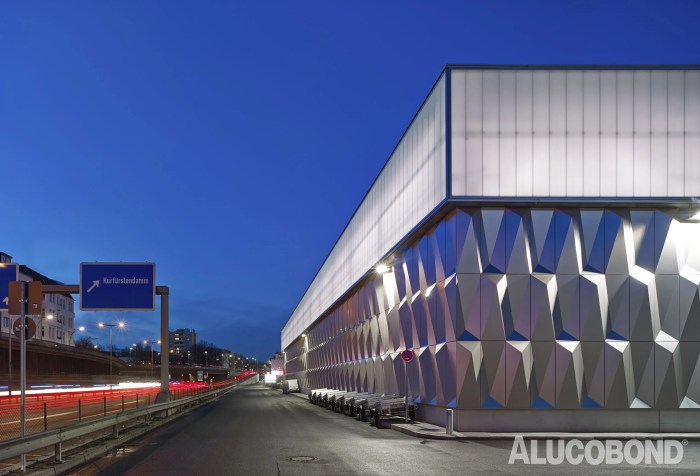
Navigating the complex world of commercial construction necessitates a thorough understanding of building codes. These regulations, which vary significantly by region and municipality, directly impact the selection, installation, and overall cost-effectiveness of commercial siding projects. Ignoring these codes can lead to costly delays, project re-work, and even legal ramifications. This section will explore the key building code considerations for commercial siding.
Commercial siding choices are heavily influenced by local building codes, which prioritize public safety and environmental responsibility. These codes often dictate specific requirements for fire resistance, energy efficiency, and weather resistance, significantly shaping the project’s design and materials selection. Compliance is not merely a legal obligation; it also directly impacts the project’s budget and timeline.
Fire Safety Regulations for Commercial Siding
Many building codes mandate specific fire-resistant properties for exterior cladding, especially in high-occupancy buildings or those located near other structures. Common requirements include Class A, B, or C fire ratings, indicating the material’s resistance to flame spread and ignition. For example, a building situated in a densely populated urban area might require Class A siding, which offers the highest level of fire protection, while a building in a less densely populated area might permit Class B or C materials. Failure to meet these requirements can result in project delays pending approval of alternative solutions or even outright rejection of the proposed siding. The cost implications of choosing a non-compliant material and then having to switch to a compliant one can be substantial, encompassing both material costs and labor for removal and reinstallation.
Energy Efficiency Standards for Commercial Siding
Increasingly stringent energy codes influence the selection of commercial siding. Regulations often specify minimum insulation values (R-values) for exterior walls, impacting the choice of siding and the need for additional insulation layers. For instance, a building in a climate with extreme temperature fluctuations might require higher R-value siding or supplementary insulation to meet energy efficiency standards. The upfront cost of higher-performance siding might be offset by long-term energy savings, but this needs to be carefully evaluated within the context of the project’s budget and payback period. Furthermore, utilizing energy-efficient siding can contribute to LEED certification, which can be a significant advantage in attracting tenants or buyers.
Weather Resistance Requirements for Commercial Siding
Building codes often address the weather resistance of commercial siding, particularly in regions prone to extreme weather conditions such as hurricanes, heavy snowfall, or intense sun exposure. These codes might specify requirements for wind resistance, impact resistance, and water resistance. For example, coastal areas might require siding that can withstand high winds and potential damage from flying debris, leading to the selection of impact-resistant materials. Similarly, regions with heavy snowfall might necessitate siding with superior resistance to ice and snow accumulation. Meeting these requirements ensures the longevity and structural integrity of the building, minimizing potential maintenance and repair costs over the building’s lifespan. The initial cost of more durable, weather-resistant siding is often justified by its ability to reduce long-term maintenance expenses.
Sustainability and Environmental Impact of Commercial Siding

Choosing sustainable commercial siding offers a compelling blend of environmental responsibility and long-term economic benefits. The environmental impact of siding extends beyond its initial production to encompass its lifespan and eventual disposal. Understanding these factors is crucial for making informed decisions that minimize the carbon footprint of your building.
The environmental impact of commercial siding materials varies significantly. Factors such as the energy consumed during manufacturing, the embodied carbon (the total greenhouse gas emissions associated with a product’s entire lifecycle), the material’s durability and longevity, and its recyclability or end-of-life disposal options all play a crucial role in determining its overall sustainability.
Environmental Impact of Different Commercial Siding Materials
The manufacturing process for different siding materials has varying degrees of environmental impact. For instance, vinyl siding, while often inexpensive, requires significant energy during its production and is not easily recyclable. Conversely, materials like fiber cement and certain types of wood siding, while potentially requiring more energy upfront, can offer longer lifespans and improved recyclability options, thus reducing the overall environmental burden over time. Metal sidings, like aluminum and steel, have a high embodied carbon footprint during production, but their durability and recyclability can offset this over their long lifespan. The use of recycled content in the manufacturing process can significantly reduce the environmental impact of many siding options.
Sustainable and Eco-Friendly Commercial Siding Options
Several siding options demonstrate a commitment to sustainability. Recycled materials are increasingly incorporated into the production of many siding types. For example, some manufacturers use recycled plastic in vinyl siding to reduce reliance on virgin materials. Wood siding sourced from sustainably managed forests, certified by organizations like the Forest Stewardship Council (FSC), ensures responsible forestry practices. Fiber cement siding, made from a combination of cement, cellulose fibers, and other additives, offers a durable and low-maintenance option with a relatively lower environmental impact compared to vinyl. Certain metal sidings utilize recycled aluminum or steel, further contributing to a circular economy. Finally, the increasing availability of bio-based siding options, made from rapidly renewable resources like bamboo or agricultural waste, represents a promising avenue for reducing the environmental footprint of commercial buildings.
Benefits of Choosing Sustainable Siding Materials
Selecting sustainable siding offers numerous advantages. From an environmental perspective, it reduces greenhouse gas emissions associated with manufacturing and transportation, minimizes waste sent to landfills, and conserves natural resources. Economically, the longer lifespan of many sustainable siding materials can lead to lower replacement costs over the building’s lifetime. Additionally, the increasing consumer demand for sustainable products can enhance a building’s marketability and attract environmentally conscious tenants or buyers. Finally, some municipalities offer incentives or tax breaks for using sustainable building materials, further enhancing the financial appeal of eco-friendly siding choices. For example, LEED (Leadership in Energy and Environmental Design) certification often favors buildings incorporating sustainable materials, potentially increasing property value and attracting tenants who value sustainability.
Visual Examples of Commercial Siding Applications
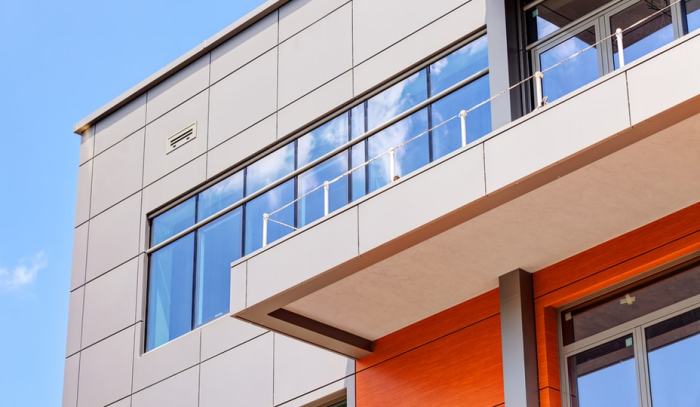
Choosing the right commercial siding significantly impacts a building’s aesthetic appeal, brand identity, and overall value. The selection process involves careful consideration of material properties, color palettes, and the architectural style of the building. Let’s examine three diverse examples to illustrate the impact of siding choices.
Modern Office Building with Metal Panel Siding
This sleek, three-story office building showcases the versatility of modern metal panel siding. The building’s architectural style is contemporary, characterized by clean lines, large windows, and a minimalist approach.
The exterior features a combination of charcoal gray and silver metal panels, creating a sophisticated and professional look. The panels’ smooth, flat surface reflects light, adding a modern, almost futuristic feel. The subtle texture of the metal provides a slight visual interest without detracting from the overall minimalist design. The dark color palette conveys a sense of stability and corporate sophistication, perfectly aligning with the image of a forward-thinking business. The choice of metal siding also contributes to the building’s durability and low-maintenance requirements, important factors for a commercial property.
Retail Space with Fiber Cement Siding
This vibrant retail space utilizes fiber cement siding to create a welcoming and eye-catching facade. The architectural style is a blend of contemporary and traditional elements, incorporating large storefront windows and a slightly more ornate roofline.
The building’s siding is a warm, earthy tone with a wood-grain texture. This creates a natural, inviting atmosphere, which is ideal for attracting customers. The color palette, featuring shades of beige and brown, provides a neutral backdrop that allows the signage and window displays to stand out. The fiber cement material offers excellent durability and weather resistance, crucial for a building that will experience high foot traffic and exposure to the elements. The wood-grain texture adds a touch of warmth and sophistication, helping to create a brand image that is both approachable and upscale.
Industrial Warehouse with Insulated Metal Panels
This large industrial warehouse utilizes insulated metal panels (IMPs) to maximize energy efficiency and create a visually striking facade. The architectural style is purely functional, prioritizing practicality and durability.
The IMPs are a deep, metallic blue, providing a bold and modern contrast against the typically drab appearance of industrial buildings. The panels’ smooth, even surface reflects light and helps to minimize heat absorption. The choice of IMPs offers significant cost savings in the long run due to their superior insulation properties. The deep blue color adds a touch of unexpected sophistication, elevating the building’s aesthetic beyond the typical industrial aesthetic. The overall effect is a clean, modern, and highly functional building that still maintains a certain level of visual interest.
Selecting the right commercial siding is a multifaceted decision requiring careful consideration of numerous factors. This guide has provided a thorough overview of the key aspects, from material selection and installation to cost analysis and compliance with building codes. By understanding the long-term implications of your choice—in terms of cost, maintenance, sustainability, and aesthetic appeal—you can make a strategic decision that enhances your building’s value and reflects your brand’s identity. Remember, the right siding is an investment that pays dividends for years to come.
Expert Answers
What is the lifespan of different commercial siding materials?
Lifespans vary greatly. Vinyl siding can last 20-30 years, aluminum 40-50 years, fiber cement 50+ years, and wood significantly less depending on maintenance (15-30 years). Metal siding can last 50 years or more.
Can I install commercial siding myself?
While DIY is possible for some types, professional installation is generally recommended for commercial buildings. Improper installation can void warranties and lead to costly repairs.
How often should I inspect my commercial siding?
Regular inspections, at least annually, are crucial. Look for damage, cracks, loose panels, and signs of water intrusion. More frequent checks are advised in harsh weather conditions.
What are the insurance implications of choosing different siding materials?
Insurance premiums can be affected by the type of siding. Fire-resistant materials like fiber cement may result in lower premiums compared to highly flammable options. Consult your insurance provider.
What are some common warranty issues with commercial siding?
Common warranty issues include defects in materials, improper installation, and damage caused by extreme weather events. Always thoroughly review the manufacturer’s warranty before purchasing.
